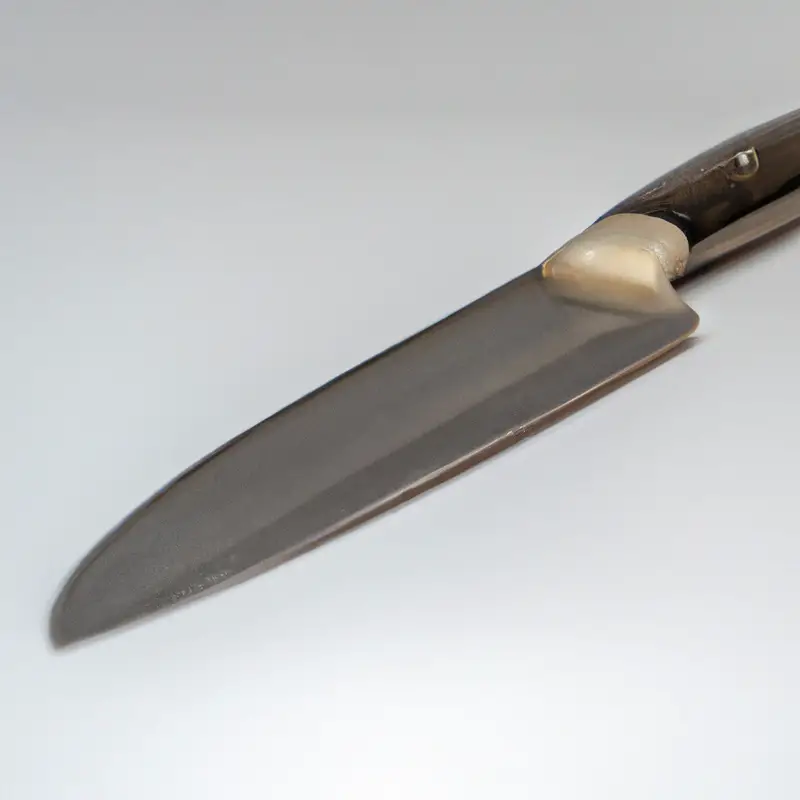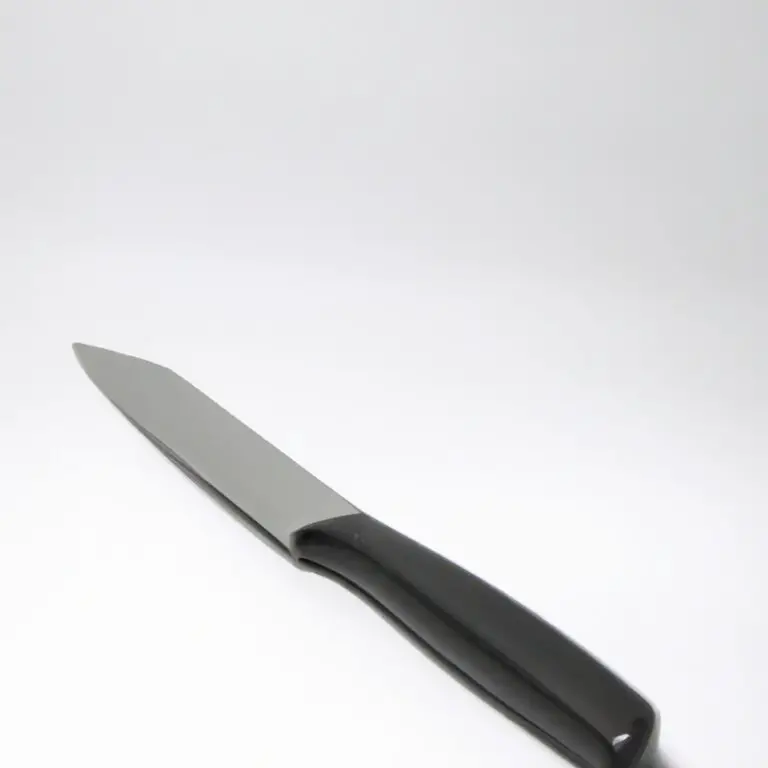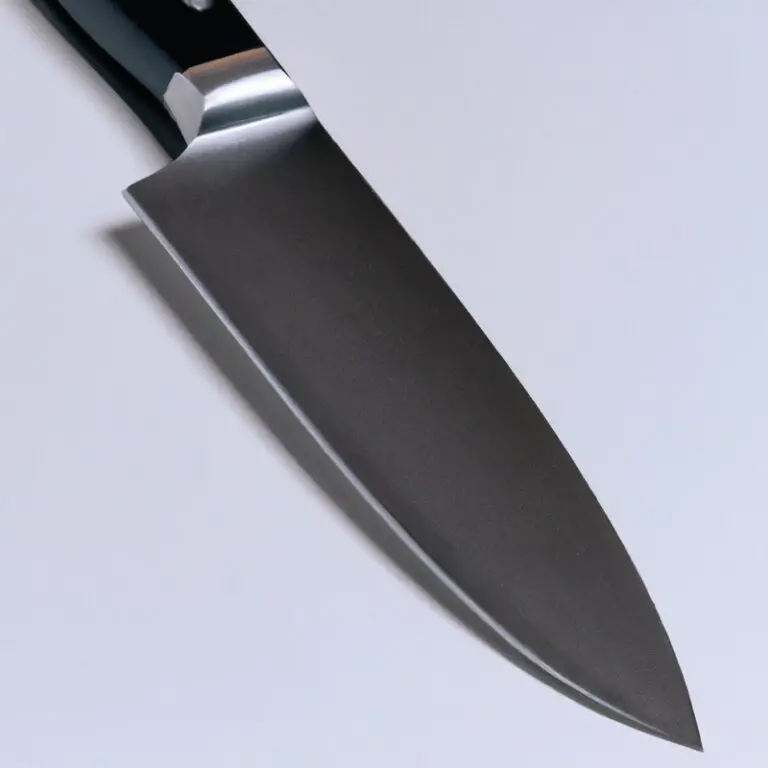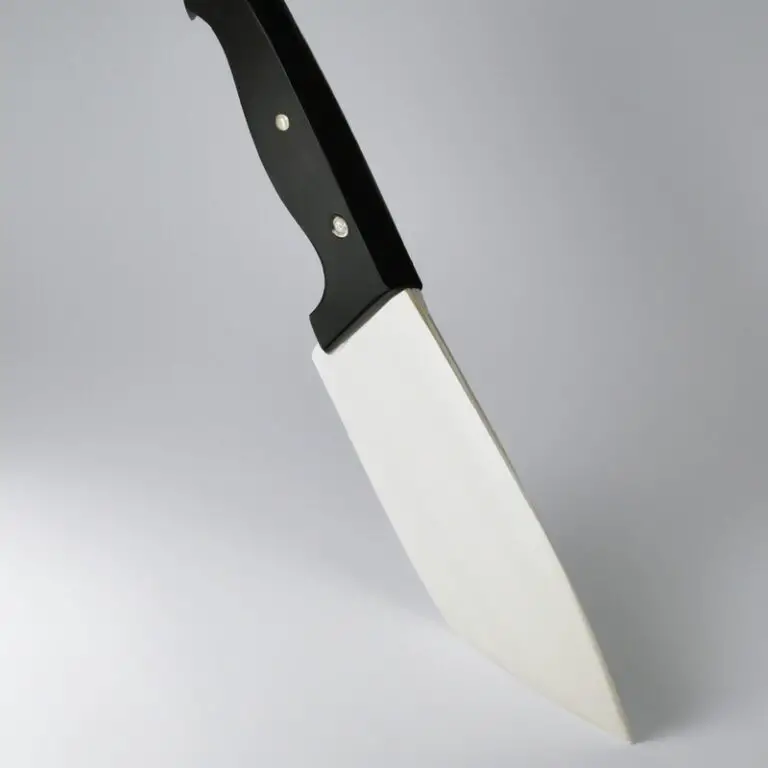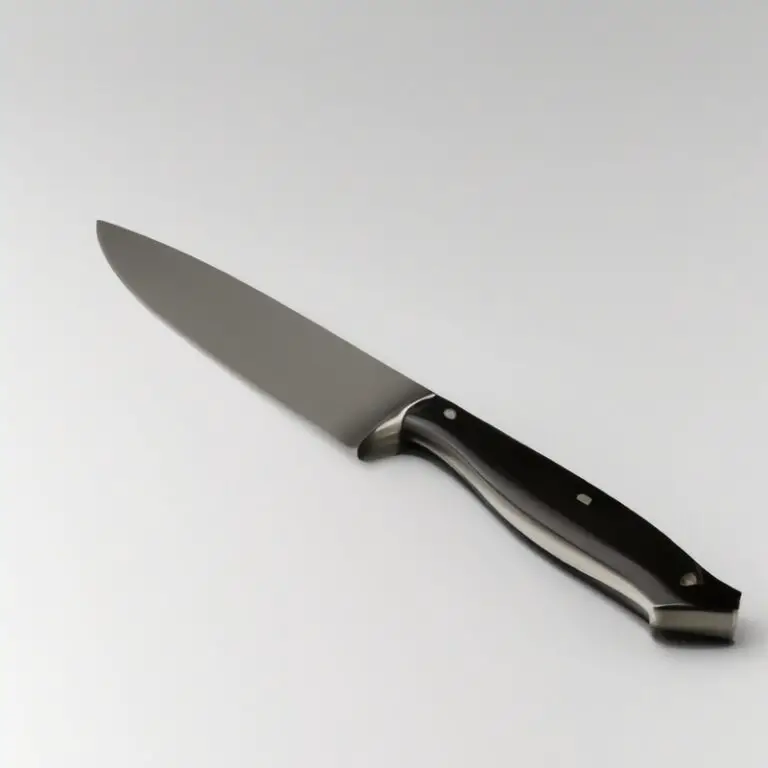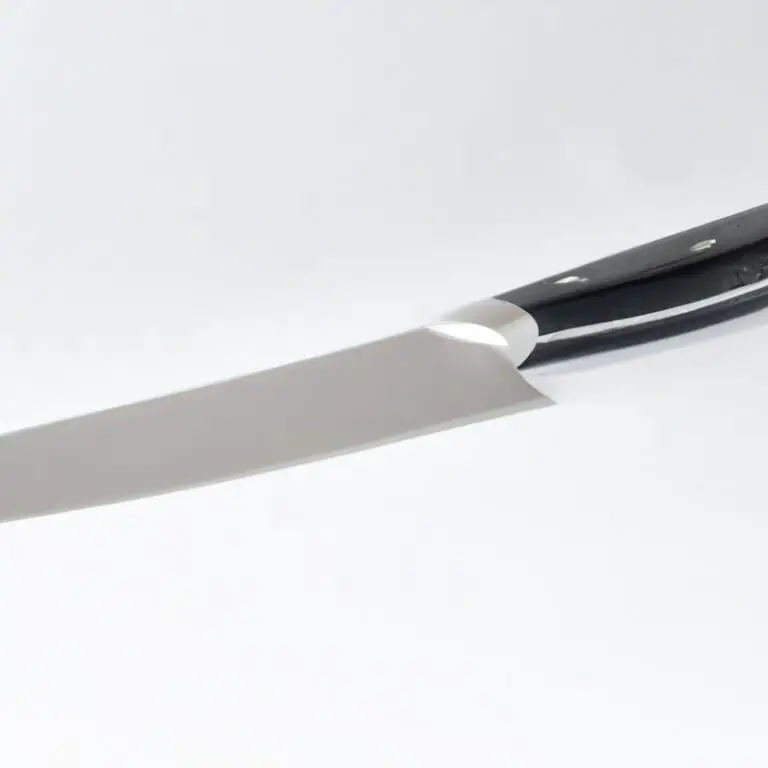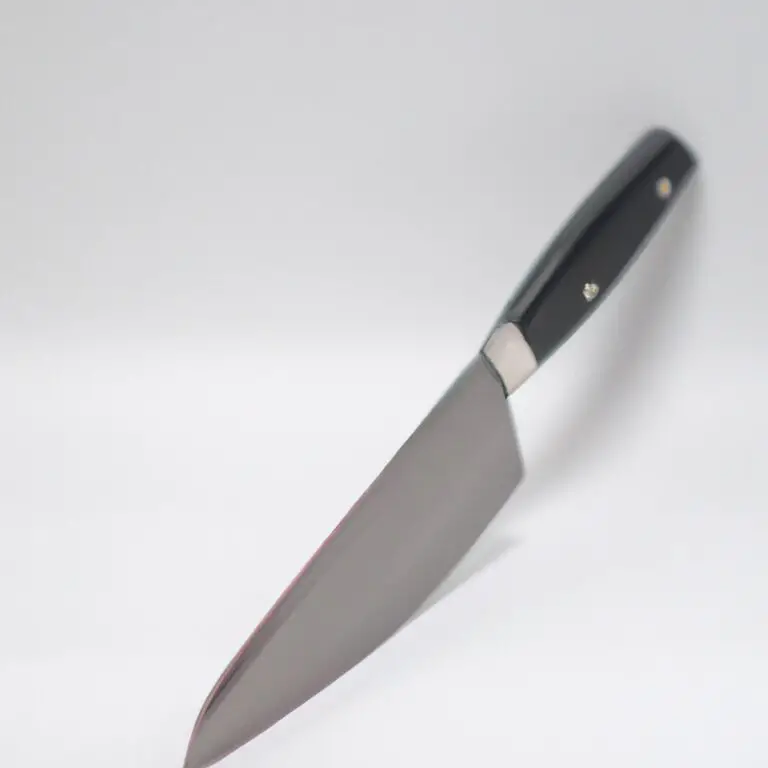What Are The Different Types Of Blade Shapes Available In Chef Knives? Explained
Key Takeaways:
- Choosing the right blade shape is crucial for a chef knife’s performance and versatility in the kitchen.
- Blade shapes like the French, Santoku, and Nakiri are popular among chefs for particular tasks such as chopping herbs, slicing meat, and preparing vegetables.
- With its distinct curved blade, the German style chef knife is considered a great all-rounder in the kitchen.
- Understanding the anatomy of a chef knife and the purpose of each blade shape can make a significant difference in the quality of your culinary creations.
As a home cook or professional chef, selecting the right tool for the job is essential. When it comes to chef knives, the blade shape is a crucial aspect that can significantly impact your cutting technique and precision.
With a plethora of options available, it can be overwhelming to choose the best blade for specific tasks in the kitchen.
In this article, we will explore the different types of blade shapes available in chef knives, their unique features, and the pros and cons of each. Whether you prefer a curved, straight, pointed, serrated, or Granton edge blade, this guide will help you make an informed decision.
| Blade Shape | Description |
|---|---|
| Bolster | A thick, solid metal piece that connects the handle to the blade |
| Clip Point | A concave curve on the back of the blade which leads up to a sharp point |
| Drop Point | A slightly curved blade with the edge curving upwards to meet the gentle point |
| Santoku | A shorter, wider blade with a flat edge and a rounded tip, typically used for chopping and slicing vegetables |
| Serrated | A blade with teeth-like serrations on the edge, useful for cutting through bread and other items with tough exteriors |
| Straight | A traditional straight blade, typically used for carving meat or fish |
| Tanto | A straight blade with a sharp point, often used for piercing and slicing tough materials |
Understanding the anatomy of a chef knife: Blade shapes and their purpose
The anatomy of a chef knife includes different blade shapes that serve specific purposes in the kitchen. A chef knife with a curved blade shape is ideal for rocking motions when chopping and mincing.
Straight blade shapes provide precise, clean cuts but may require more force to cut through tough foods.
Pointed blade shapes are versatile and can be used for piercing, slicing, and carving. Serrated edge and Granton edge blade shapes provide unique features for slicing through crusty bread and reducing friction during cutting, respectively.
Blade thickness also plays a role in cutting efficiency and may vary depending on the task at hand.
It’s important to choose the right blade shape for specific tasks and personal preference to achieve the desired cutting technique and precision.
The benefits of using a chef knife with a curved blade shape
A chef knife with a curved blade shape provides several benefits when it comes to the precision and efficiency of cutting. Here are some advantages of using a chef knife with a curved blade shape:
- Rocking motion: The curve in the blade makes it easier to use a rocking motion while cutting, increasing efficiency and reducing fatigue.
- Versatility: A curved blade shape allows for versatility in various cutting techniques such as slicing, chopping, and mincing.
- Better grip: The curve also allows for a better grip on the food being cut, reducing the risk of slippage and injuries.
- Precision: The curve on the blade tip enables precise cutting in hard-to-reach areas, such as around bones or joints.
Overall, a chef knife with a curved blade shape is an excellent choice for those who value precision, efficiency, and versatility in their kitchen tasks.
Straight blade shapes in chef knives: Pros and cons
Straight blade shapes offer a simple and traditional design in chef knives. These blades are typically flat, with a straight edge from the heel to the tip.
Pros:
- Straight blades are easy to sharpen, making them a low maintenance option.
- They offer a precise edge for cutting through tough ingredients like meat or squash.
- The flat profile of the blade makes it easier to achieve a straight cut.
Cons:
- A straight blade may require more force to make a cut than a curved blade.
- It is not as versatile as a curved blade, since it is better suited for chopping and not as effective in slicing.
- Straight blades may require more experience and skill to use effectively, particularly for delicate tasks like filleting fish.
When considering a straight blade shape in a chef knife, it is important to keep in mind the specific tasks it will be used for, and the user’s level of experience and comfort with the blade. It may be a good fit for those who prefer a simple design and prioritize low maintenance, but those who require a more versatile blade may want to consider a curved or serrated edge instead.
The importance of choosing the right blade shape for specific tasks in the kitchen
Choosing the right blade shape for specific tasks in the kitchen is crucial for achieving optimal function and precision. Each blade shape has its own unique purpose, and selecting the appropriate blade shape for a particular task can improve efficiency and accuracy.
For example, a chef’s knife with a curved blade is ideal for chopping vegetables and fruits, while a straight blade is better suited for slicing meat.
The pointed blade shape excels at precise cuts, while the serrated edge is perfect for slicing bread and tomatoes. Personal preference also plays a significant role in selecting the appropriate blade shape.
Ultimately, the key to achieving mastery in the kitchen is selecting the right tool for the job.
Exploring the different variations of the pointed blade shape in chef knives
The pointed blade shape is one of the most common types of blade shapes found in chef knives. It is designed to have a sharp and narrow tip, making it ideal for precision tasks such as peeling, trimming, and carving.
There are several variations of the pointed blade shape, including the drop point, clip point, and spear point.
The drop point has a slightly curved edge that drops down towards the tip, creating a more gradual point. This type of blade shape is versatile and well-suited for various tasks such as chopping, slicing, and mincing.
The clip point has a concave curve on the back of the blade near the tip, creating a narrow and sharp point.
This blade shape is commonly used for intricate and detailed tasks such as trimming and filleting. The spear point features a symmetrical point, making it ideal for puncturing and piercing foods.
It is also well-suited for precise slicing tasks.
When choosing a chef knife with a pointed blade shape, consider the specific tasks you will be performing and select a shape that will best suit your needs. It is important to use the correct technique when using a pointed blade to ensure safety and precision in the kitchen.
Unique features of versatile blades: Serrated edge and Granton edge blade shapes
Serrated and Granton edge blade shapes are two versatile features found in chef knives. A serrated blade has teeth-like serrations on its edge, making it easier to cut through tough and crusty foods like bread and tomatoes.
On the other hand, a Granton edge blade has air pockets or hollows, reducing the surface area in contact with food and creating less drag as it slices through food.
This feature is especially useful when cutting meat. Both of these unique features offer a new level of versatility to chef knives, making it easier to tackle different types of foods with ease and precision.
When choosing a chef knife, consider the types of food you frequently prepare and choose the blade shape accordingly.
The significance of blade thickness in chef knives: Thin vs. thick blade options
The thickness of a chef knife’s blade is a critical factor that determinates its performance. Thin blades generally provide a more effortless and precise cutting experience, making them ideal for tasks that require more finesse, such as filleting fish or slicing delicate ingredients.
On the other hand, thick blades offer better durability, weight, and sturdiness, making them better suited for heavy-duty tasks such as cutting through bones or dense vegetables.
When deciding between a thin or thick blade option, it’s essential to consider your specific needs and preferences in the kitchen. Your cutting style, the types of food you generally prepare, and the amount of pressure you apply to the blade all play a significant role in determining which blade thickness is right for you.
While thin blades offer superior precision, they are also more prone to chipping or breaking if subjected to significant force or pressure.
Conversely, thick blades are less likely to suffer from structural damage but can feel cumbersome or unbalanced in the hands of inexperienced users. Ultimately, the choice between a thin or thick blade will depend on your individual needs and level of experience.
It’s always advisable to test out different blade thicknesses to determine which one feels the most comfortable and provides the best results for your preferred cutting techniques.
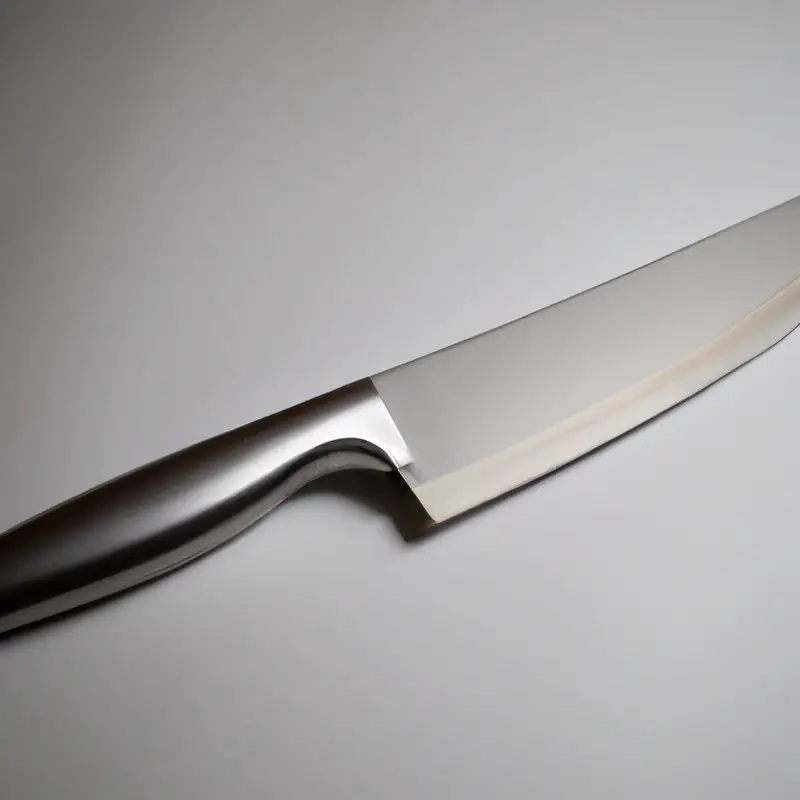
Choosing the right blade shape for chopping, slicing, or dicing
Choosing the right blade shape for chopping, slicing, or dicing is vital in achieving the desired results in the kitchen. A curved blade shape is suitable for chopping ingredients with a rocking motion, while a straight blade shape is ideal for precision slicing and dicing.
Pointed blade shapes are versatile for intricate tasks, while serrated and Granton edge blades work exceptionally well for cutting through tough materials.
Blade thickness also plays a significant role in the performance of a chef knife, with thin blades being perfect for precision tasks and thicker blades being better for heavier chopping. Ultimately, the best blade shape for you depends on your personal preference and the tasks you frequently perform in the kitchen.
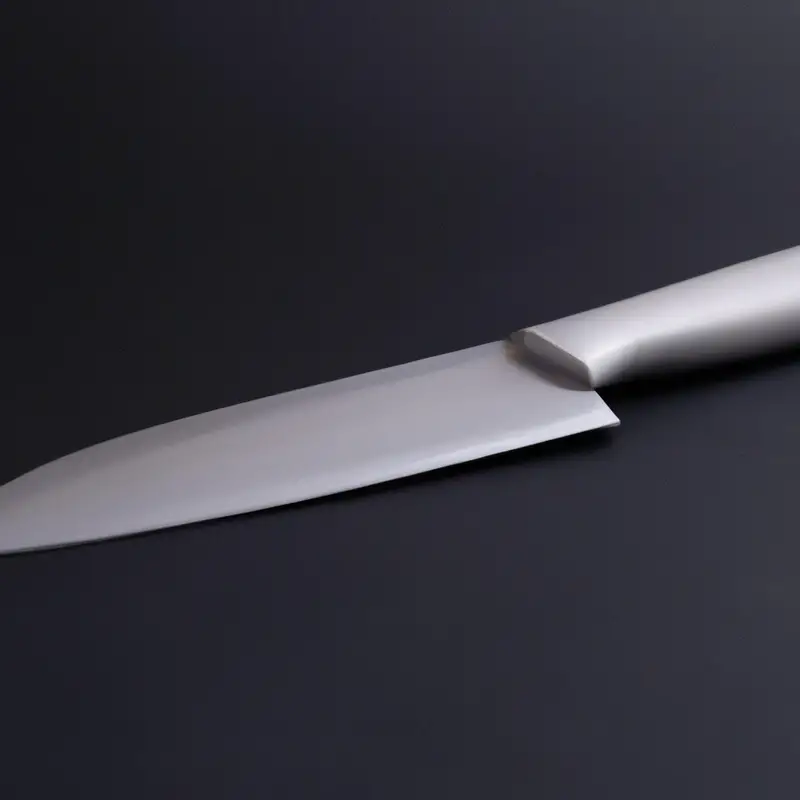
How the shape of a chef knife affects cutting technique and precision
The shape of a chef knife greatly affects cutting technique and precision in the kitchen. A curved blade shape allows for a rocking motion that is ideal for chopping and mincing ingredients.
A straight blade shape is best for slicing because it provides a smooth, even cut.
Pointed blade shapes offer precision when making intricate cuts or working with small ingredients. Serrated blades and Granton edges are excellent for cutting through tough or slippery ingredients, respectively.
The thickness of the blade also plays a role in cutting technique, with thinner blades providing greater precision and thicker blades providing more power.
When choosing a chef knife, it is important to consider the specific tasks it will be used for and select a blade shape that is best suited for those purposes. Personal preference also plays a role, as some chefs prefer the feel of certain blade shapes over others.
The role of personal preference in selecting a chef knife with the right blade shape
Personal preference plays a crucial role in selecting a chef knife with the right blade shape. The choice of blade shape depends on the individual’s comfort level, experience, and the type of cutting techniques they prefer.
For example, some chefs prefer a thin blade for precise cutting, while others opt for thicker blades for more robust applications.
It is essential to test the feel of the blade shape and ensure that it is comfortable to hold and use. Ultimately, personal preference should be a dominant factor when selecting a chef knife since it impacts the user’s ability to execute their desired cutting techniques with precision.
Final Verdict
Understanding the various types of blade shapes in chef knives is crucial for achieving optimal results in the kitchen. By selecting the right blade shape for specific tasks, you can greatly improve your cutting technique and precision.
Whether you prefer a curved, straight, pointed, serrated edge, or Granton edge blade shape, each option has its unique advantages and disadvantages.
However, the key is to choose a blade shape that caters to your personal preferences and cooking style. Remember, the most important factor when selecting a chef knife is the reliability and expertise of the information presented, which we have provided throughout this article.
Armed with this knowledge, you can confidently choose the best blade shape for your culinary needs and take your cooking skills to the next level.

